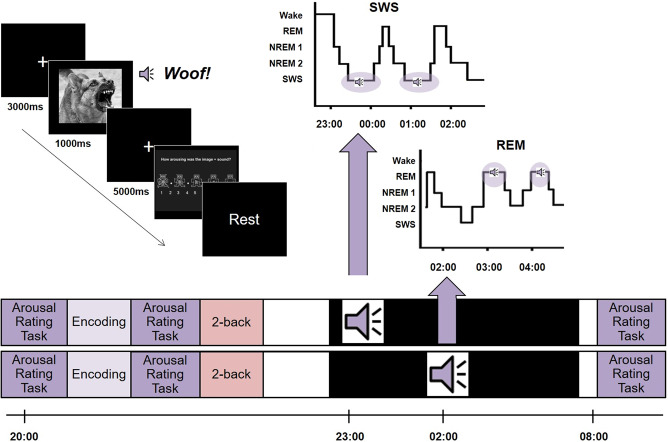Fig. 1. Experimental design.
In the evening session, participants rated each combined picture/sound stimulus for arousal. Next, they completed an encoding task in which they had to indicate which sound was paired with each image. They then completed the arousal rating a second time, as ratings may have changed as a result of the encoding task. Finally, participants performed a visual 2-back task using images that were not seen elsewhere in the experiment to create a buffer between exposure to the highly emotional stimuli and subsequent sleep. They were then fitted with electrodes for PSG recording and allowed to relax until lights out at approximately midnight. During the night, we performed TMR by exposing participants to the sounds associated with half of the neutral and half the negative learned stimuli in pseudorandom order five times each but avoiding adjacent repetitions. Sound cues were presented during REM in the REM group and during SWS in the SWS group. In the morning, participants were allowed thirty minutes to overcome sleep inertia before performing a final arousal rating task. We examined overnight change in arousal ratings to determine how these had changed across the night.

